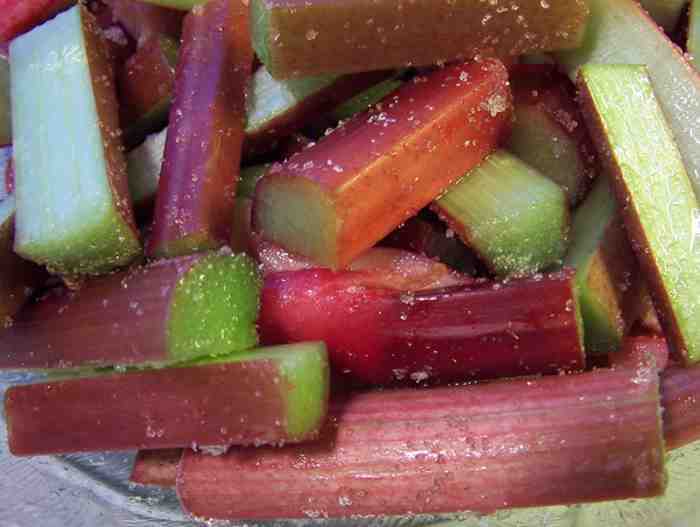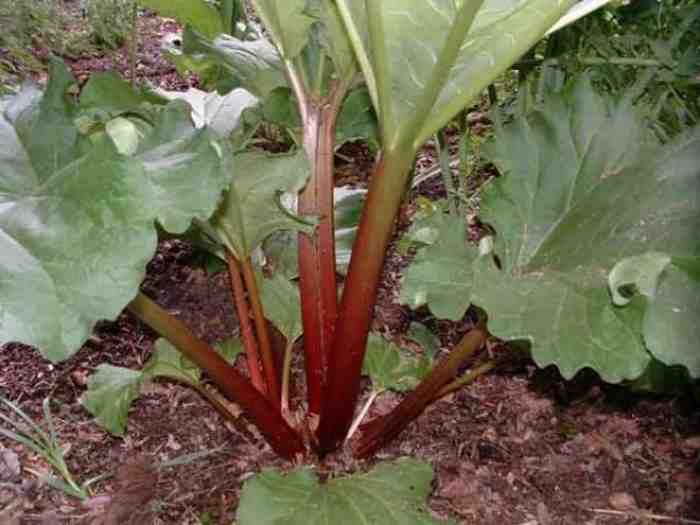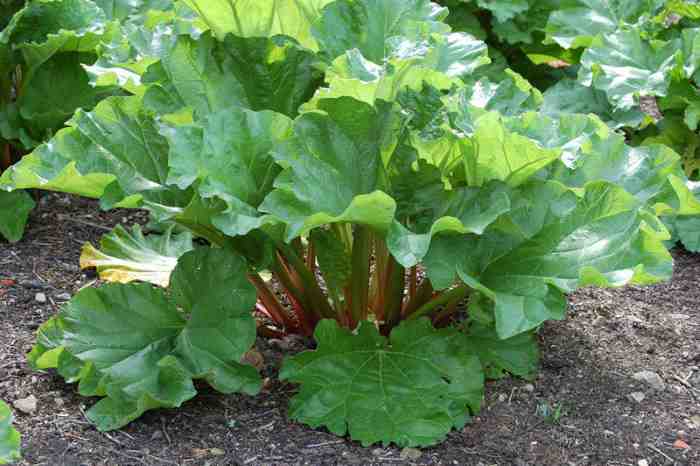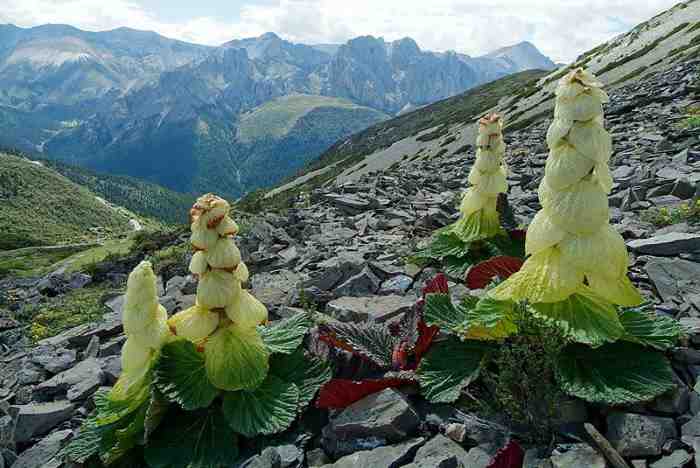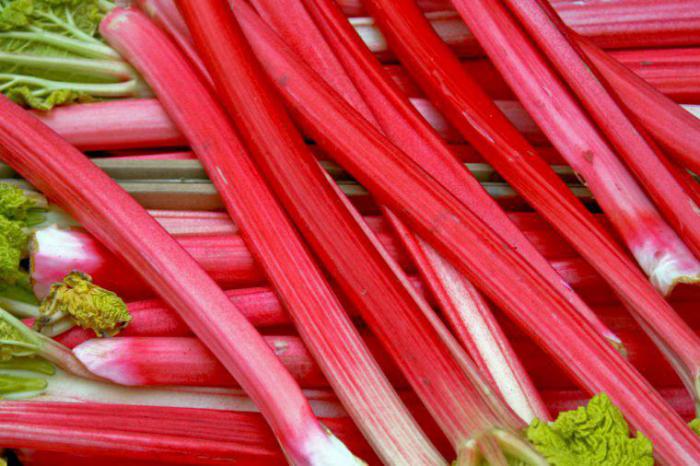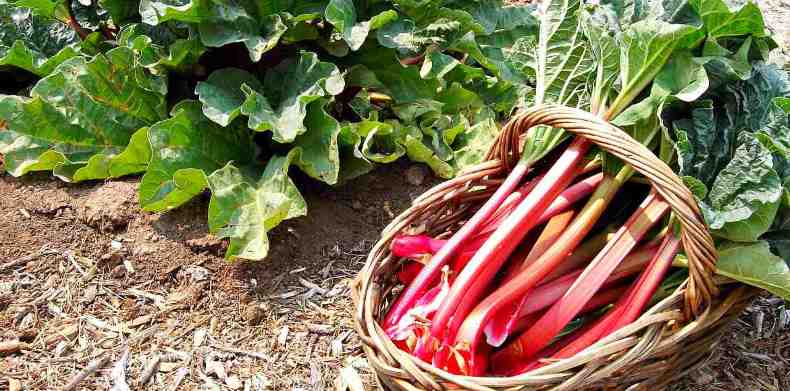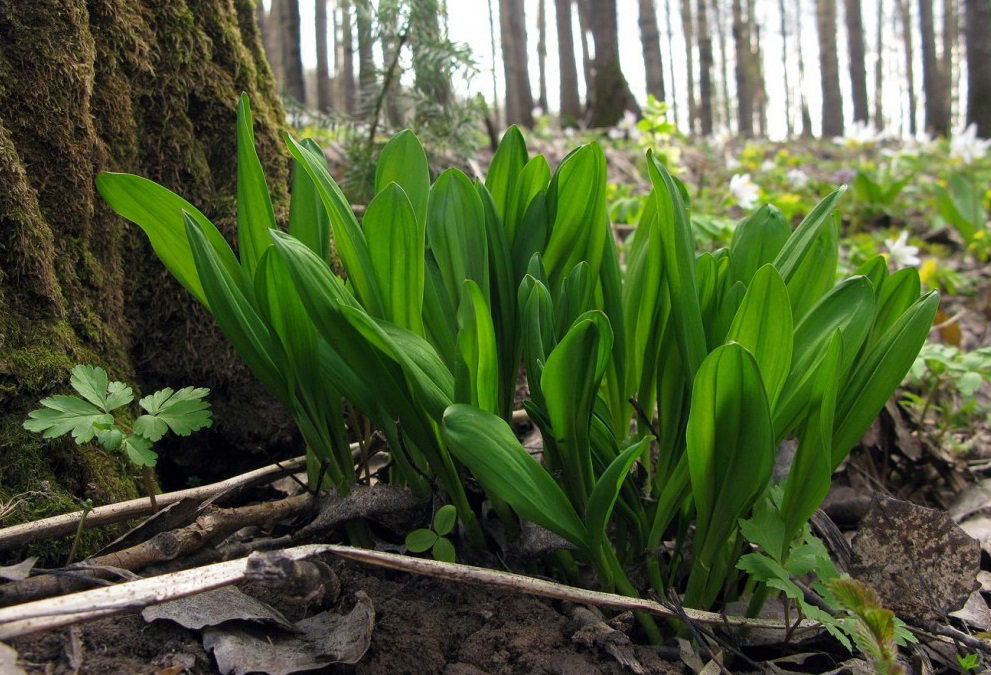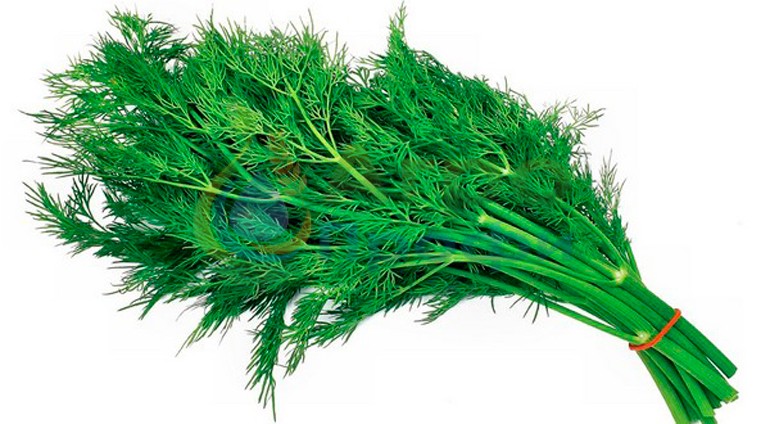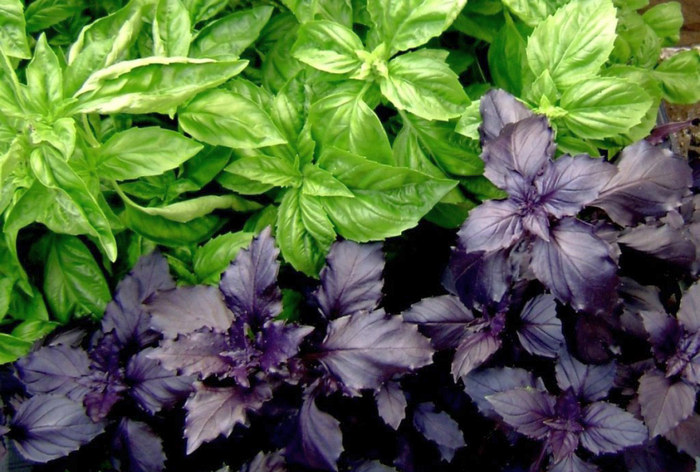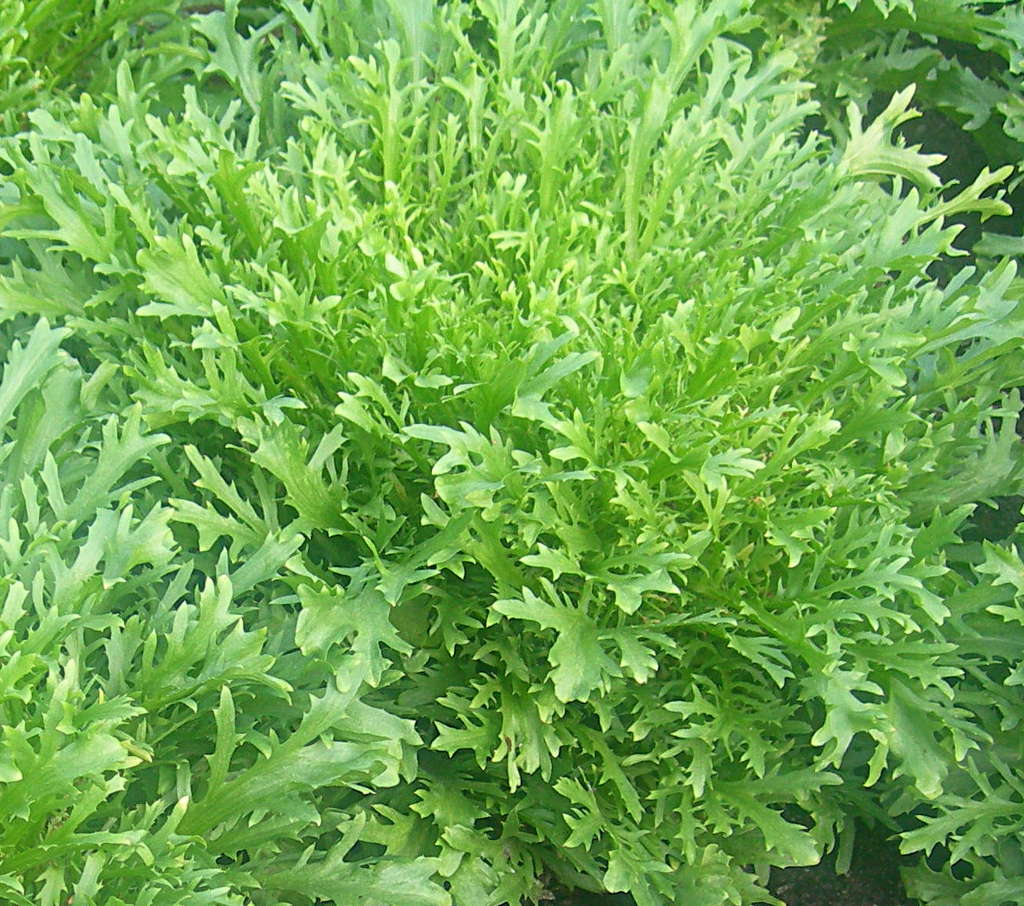Content:
The rhubarb plant is a vegetable garden crop with ancient cultivation history. The homeland of the plant is considered to be areas of central China, where it has been cultivated for several millennia. For the first time rhubarb is mentioned in the annals of herbalists of prehistoric times long before our era. Since then, the plant has successfully "settled" in other countries and continents, where it is grown everywhere. It is especially popular in European and Baltic countries, where the slightly sour and delicate taste of pink petioles is especially fond of.
Feature and Description
The rhubarb plant belongs to the Buckwheat family and has more than 50 species. The culture is referred to as garden-type plants, it is consumed as a fruit, fresh and processed.
Botanical description of the vegetable:
- Rhubarb is classified as a herbaceous plant;
- The outer part in the form of green wavy leaves dies off in late autumn, and the underground roots remain in the ground for the winter;
- When a vegetable is planted with seeds in early spring, tiny sprouts appear, which subsequently turn into small plants with leaves in the form of a rosette;
- The plant is covered with earth for the winter and covered with snow from above;
- In the third year, the grass rhubarb from a small seedling turns into an adult plant;
- Rhubarb root is large with a well-branched open system. In an adult vegetable, the root mass reaches 5 kg;
- The growth of the vegetable begins in early spring, when the ground warms up a little. If the spring is warm, then there is a rapid development of the bush. In spring return frosts, the growth rate decreases;
- The plant begins to bloom after the growth of flowering stems, which coincides with the development of the general greenery of the leaves;
- The best place to grow is open, well-lit areas of sunlight. Rhubarb tolerates shading well and is considered a shade-tolerant plant;
- The moisture-loving plant does not tolerate stagnant and ground water, which has a detrimental effect on the roots;
- Care is the simplest: it consists in the timely loosening of the soil and watering.
For planting, it is recommended to choose well-permeable loamy soils, as well as a mixture of clay and chernozem, which contains a large supply of nutrients.
To increase the usefulness of the petioles and remove excess oxalic acid, rhubarb, when it is time to harvest, must be processed by separating the leaves from the cuttings.
Varieties
Recently, on the shelves and windows of vegetable stores, you can see an unusual plant - petioles, somewhat similar to celery. Few people know how to use rhubarb leaves. To understand what rhubarb is, and what explains its wide popularity in European countries, it is recommended to familiarize yourself with its amazing property of filling the human body with nutrients, trace elements and vitamins. Only the stems and petioles of the plant are used for food, the rest of the greens is considered inedible.
Currently, significant selection work is being carried out with garden rhubarb, and new varieties with different colors and sizes of tasty petioles are being developed.
Tangut rhubarb
According to the international classification, the plant is designated by the Latin name Rheum tanguticum and belongs to the Buckwheat family.
The botanical description is similar to the description of a similar species of Hand-shaped rhubarb:
- Powerful root system;
- The terrestrial part consists of straight cylindrical stems, hollow inside, with red spots on the outside;
- The height of an adult bush reaches 2 meters;
- Numerous small flowers are collected in large panicle type inflorescences up to 50 cm long;
- The plant begins to bloom in the middle of summer in the second year of life;
- After flowering, instead of flowers, a small seed box appears in the form of a three-winged nut with three sides of a brownish-red hue.
According to the Flora of Russia register, this type of vegetable is considered to be a “relative” of Palchaty rhubarb, which has the Latin name “Rheum palmatum”. Their difference lies in the depth of the cuts in the leaves and the shape of the branches of the inflorescences.
Rhubarb Noble
This vegetable crop is considered the most unusual member of the rhubarb family. The plant grows on rocky placers in the mountainous regions of the Himalayas, Tibet, Afghanistan, Nepal and India. In order to understand what the Noble rhubarb looks like, it is recommended to admire the photographs from the alpine mountain lawns.
Description and characteristics Rheum nobile:
- Perennial herb with a maximum height of adult specimens up to 2 meters;
- The root is fleshy and spreading;
- Straight powerful stems of red and red-green hue;
- The leaves near the root exceed 20 cm in circumference, with dense leathery greens of rich green color with red veins;
- The upper part of the leaves is small in size, concave in shape and painted in a straw color of yellow or cream shade with a pink border;
- Noble rhubarb blooms with green small flowers, which in large numbers form a dense luxurious panicle;
- The fruits, like the Tangut "fellow", have the appearance of a small nut with reddish wings. Due to its decorative attractive appearance, this variety is often used to decorate household plots.
Noble rhubarb cannot "boast" of special winter hardiness. Winter temperatures just below -18 degrees have a detrimental effect on the vegetable. Therefore, in our country, this variety is very rare.
Altai rhubarb
The wild type of vegetable culture is listed in the Red Book of Rare Plant Species. The distribution area is the southern part of Siberia, Altai Territory, Sayan, Transbaikalia. It grows on rocky embankments and stony mountain slopes of the alpine belt.
Botanical characteristics of the variety:
- Herbaceous perennial plant with a height of up to 2 meters;
- The succulent fleshy leaves are like those of a burdock;
- Short and fleshy rhizome;
- Basal large leaf, round-ovoid, on a long petiole;
- Flowering begins in the third year after planting. Small inflorescences of the correct shape of white, green or pink shades are collected in large panicles;
- The plant blooms in the month of July;
- In place of flowers, triangular red nuts with small wings are formed.
Altai rhubarb can be found in the botanical gardens of the capital and large cities of Siberia. The plant is cultivated as a vegetable and medicinal crop.
Rhubarb Livingston
Among the traditional varieties of vegetable crops, new varieties of domestic and foreign selection are constantly appearing. As an example, consider the garden large-peted rhubarb of the Finnish selection Livingstone, the Latin name is "Rheum hibrudum Livingstone".
Its main difference from other varieties is the ripening time of the crop. The formation of petioles with juicy and tender pulp occurs in autumn, after the summer heat subsides, which has a positive effect on the biochemical composition of the pulp. By reducing the amount of acidic oxalic acid, the palatability of Livingstone vegetable crop is improved.Edible, delicate and tasty petioles can be eaten fresh as a delicacy. In European countries, this variety is so fond of that many farmers are engaged in its cultivation, supplying fresh rhubarb from the fields to the city and to the table of city dwellers. The use of roots is prohibited, as it may harm the body.
Culture properties
In order to find out what rhubarb is useful for, and what is its growing popularity, it is recommended to familiarize yourself with the useful and medicinal properties of a vegetable culture. Succulent petioles and stems of the plant are eaten. It is these parts that are saturated with malic, citric, oxalic, succinic and other acids that are so necessary for the human body. Rhubarb contains mineral components in the form of phosphorus, magnesium and calcium. In addition, for the high content of various vitamins, this vegetable crop is deservedly called a green pharmacy. Petioles are rich in vitamins A, B, C, E and nutrients such as carotene, pectin and tannin.
In addition, the rhubarb plant belongs to the only product that contains a rare medicinal product - vitamin K. 100 g of a vegetable product contains 30% of the daily value of this vitamin. Since the plant is a low-calorie product (it contains only 16 Kcal), its food use has no contraindications, and you can safely eat with delicious roots without fear to gain extra pounds. One stem weighing 100 g contains 0.7% protein, 2.5% carbohydrates and only 0.1% fat.
Benefits of the rhubarb plant:
- The use of petioles and stems has a beneficial effect on the urinary organs and relieves various edema;
- Improving the functioning of the digestive system;
- The digestibility of the consumed food increases, which has a positive effect on the dynamics of the gastrointestinal tract;
- Serves as an excellent tool for raising weakened immunity, with anemia, loss of strength and chronic fatigue;
- Strengthens the heart muscle and vascular walls;
- It is used for diseases of the kidneys and liver;
- Saturates the blood with oxygen;
- Due to the content of antioxidant substances, rhubarb helps to rejuvenate the body;
- Improves blood composition;
- The use of rhubarb is indicated for diseases of the respiratory system and lung diseases.
There are many popular recipes using this vegetable. An example is a home remedy for bowel disorders. To do this, you need to take the powder from the dried roots of the plant and take half a teaspoon before meals. The medicine must be washed down with plenty of warm water. In folk medicine, an alcoholic tincture of the dried roots of a plant is often used, which is easy to make on your own.
Contraindications to the use of rhubarb
What this is and why not everyone can use this amazing vegetable, you need to familiarize yourself in detail:
- It is not allowed to give rhubarb to children under 10 years of age;
- A restriction has been introduced on the use by persons with urolithiasis and cholelithiasis;
- It is not allowed to use with increased acidity of gastric juice;
- There is a ban on the use of petioles for the following diseases: cystitis, liarrhea, cholecystitis, rheumatism, diabetes, peritonitis, gout;
- Rhubarb dishes are not recommended for pregnancy and breastfeeding;
- It is not allowed to use in case of intestinal obstruction.
About pests
Rhubarb, like all vegetable crops, can be affected by pests, in particular rhubarb bug, potato scoop, beetles and larvae, as well as aphids.To get rid of them, plants should be sprayed with an aqueous solution of tobacco dust at the rate of 4-5 g per 1 m².
Another main enemy of this vegetable crop is powdery mildew. This viral disease is typical for areas with a humid climate and affects many vegetable crops. The best remedy for powdery mildew is to spray the plants with a 1.5% solution of Bordeaux mixture.
It does not matter which drug is chosen to protect the rhubarb from possible diseases and pests, for the labor spent, the rhubarb will generously "thank" the gardener with tasty, juicy and very useful petioles.
